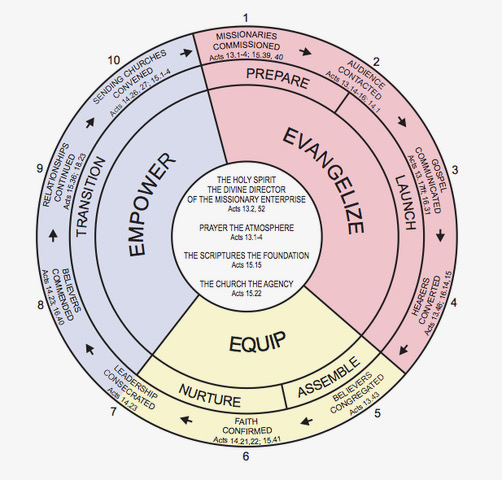In Acts 19, we see the apostle Paul’s mission in Ephesus flourishing, not just because of evangelism, but also because he intentionally developed leaders. Paul didn’t just preach the gospel; he poured into others, empowering them to carry the mission forward. The result was a church that grew in numbers and impact, with leaders who would continue the work long after Paul left. Paul’s intention to develop leaders had caught on in the church such that others were developing leaders as well, as seen in Acts 18 when Priscilla and Aquila mentor Apollos, helping him to develop as a future leader as he gained knowledge and ministry skills.
Paul’s approach wasn’t just about starting churches but about empowering leaders to continue the mission. Paul’s strategy included:
- Evangelism – Winning people to Christ.
- Nurturing – Grounding believers in the faith.
- Empowering leaders – Equipping others to lead.1
David Hesselgrave, in his book Planting Churches Cross-Culturally1, created this helpful chart to expand on this idea.

For Paul, leadership development wasn’t secondary; it was central to church growth. If we want our churches to thrive long-term, we must prioritize investing in and mentoring other leaders, focusing on biblical thinking, Christlike character, and ministry skills.2
Are you investing in leaders who can carry the mission forward? Let’s be churches that not only grow, but multiply, leaving a legacy of leaders who continue to spread the gospel.
1 Planting Churches Cross-Culturally: North America and Beyond by David J. Hesselgrave
2 Centers of Church Based Training Curriculum by Gene Getz




